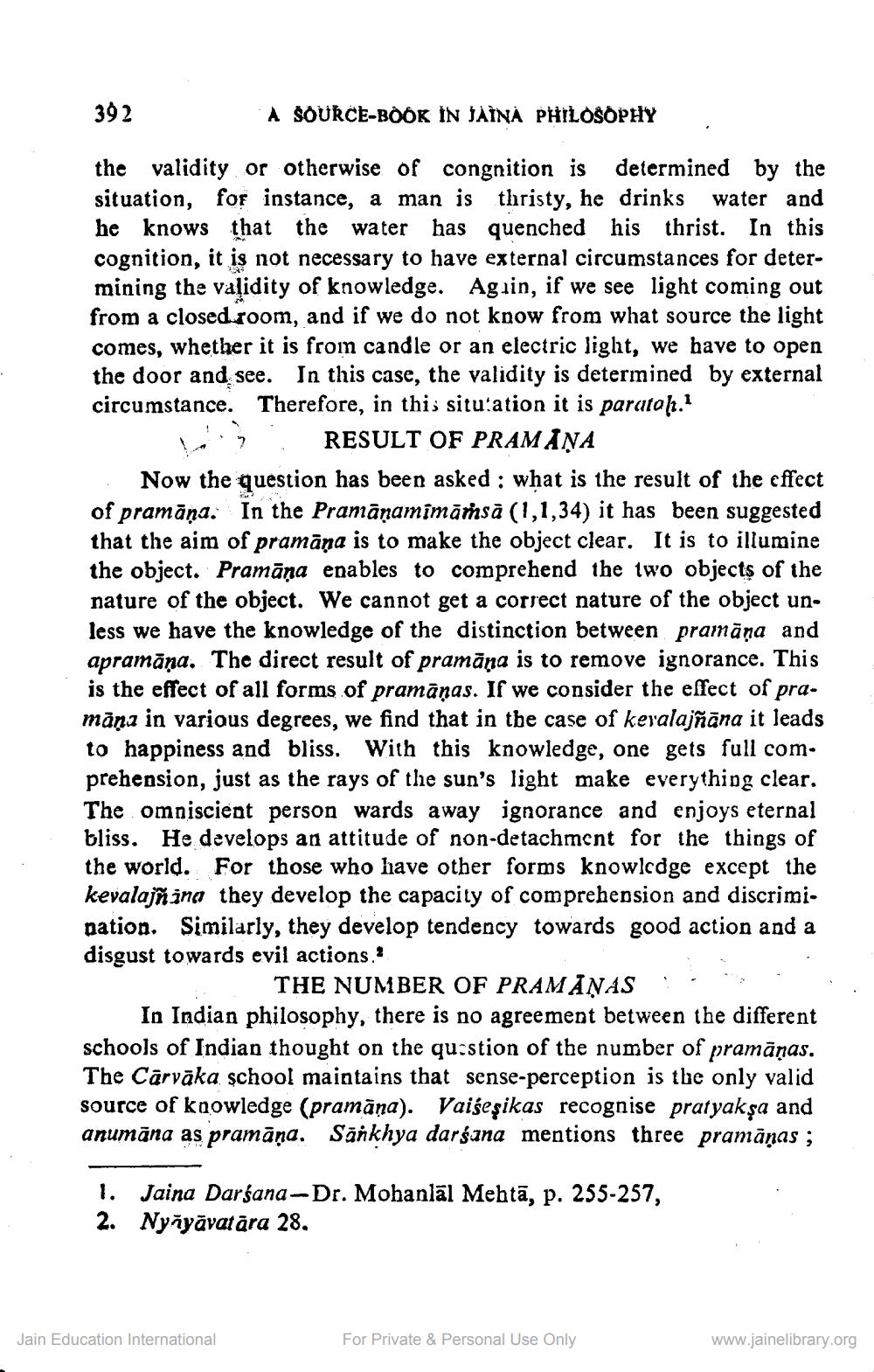________________
392
the validity or otherwise of congnition is determined by the situation, for instance, a man is thristy, he drinks water and he knows that the water has quenched his thrist. In this cognition, it is not necessary to have external circumstances for determining the validity of knowledge. Again, if we see light coming out from a closed room, and if we do not know from what source the light comes, whether it is from candle or an electric light, we have to open the door and see. In this case, the validity is determined by external circumstance. Therefore, in this situtation it is paratah.1
RESULT OF PRAMĀŅA
A SOURCE-BOOK IN JÄÌNA PHILOSOPHY
Now the question has been asked: what is the result of the effect of pramāṇa. In the Pramāṇamīmāṁsā (1,1,34) it has been suggested that the aim of pramāņa is to make the object clear. It is to illumine the object. Pramāṇa enables to comprehend the two objects of the nature of the object. We cannot get a correct nature of the object unless we have the knowledge of the distinction between pramāṇa and apramāņa. The direct result of pramāņa is to remove ignorance. This is the effect of all forms of pramāņas. If we consider the effect of pramāņa in various degrees, we find that in the case of kevalajñāna it leads to happiness and bliss. With this knowledge, one gets full comprehension, just as the rays of the sun's light make everything clear. The omniscient person wards away ignorance and enjoys eternal bliss. He develops an attitude of non-detachment for the things of the world. For those who have other forms knowledge except the kevalajñāna they develop the capacity of comprehension and discrimination. Similarly, they develop tendency towards good action and a disgust towards evil actions."
THE NUMBER OF PRAMAŅAS
In Indian philosophy, there is no agreement between the different schools of Indian thought on the question of the number of pramāņas. The Cārvāka school maintains that sense-perception is the only valid source of knowledge (pramāṇa). Vaiseşikas recognise pratyakṣa and anumāna as pramāṇa. Sānkhya darśana mentions three pramāņas;
1. Jaina Darsana-Dr. Mohanlal Mehta, p. 255-257, 2. Nyāyāvatāra 28.
Jain Education International
For Private & Personal Use Only
www.jainelibrary.org




